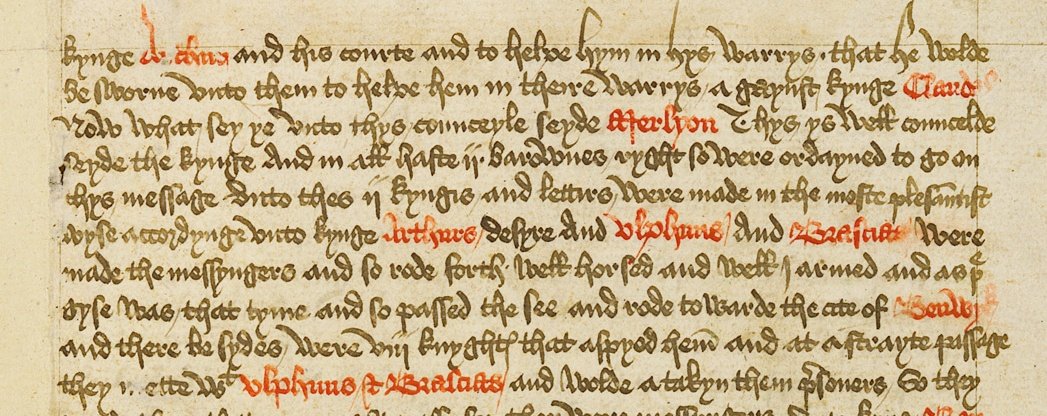Have we talked about the manuscript of Sir Thomas Malory& #39;s Le Morte Darthur, twitter?
First things first: Le Morte Darthur was a print book, published by William Caxton in 1485. For centuries that 1485 edition was the oldest edition anyone had; whatever originals Caxton used were unknown. Fine. It happens.
So Caxton& #39;s print edition looks like this:
So Caxton& #39;s print edition looks like this:
If you& #39;re unfamiliar with early print books you& #39;ll probably notice how much they tried to replicate the look of handwriting, and also how difficult it is for modern people to read. That section I just shared starts "he made for his brother. Ah Launcelot he sayde thou were ..."
But in 1934, assistant headmaster Walter Oakeshott found a manuscript in the Winchester library. He didn& #39;t recognize it at once, but eventually figured out that it was a manuscript version of Malory.
The first pages are missing, so that the manuscript begins in the middle of a sentence. This is "Kynge Arthure and his courte and to helpe hym in hys warrys."
This discovery was, of course, very exciting. Eventually it was concluded that the Winchester manuscript was older than Caxton, was not the text Caxton used as his source, but was in Caxton& #39;s workshop at one point.
This last point is very cool. Look at this "but". See it? See the but? There& #39;s an offset of an "I" faintly over the u. I believe it was Takiko Kato who showed that that I matches Caxton& #39;s. Boom. Evidence that this manuscript was in Caxton& #39;s workshop.
Now. Look back at the images I& #39;ve shown of the Winchester manuscript so far. The obvious thing you notice is ... well it& #39;s weird! These red words are not a usual feature of medieval manuscripts.
The red parts—the rubrications—are all names. This continues through the whole manuscript. The names are all in red, as is the word Sankgreal (the Holy Grail).
Now there are two other things to point out about these rubrications. First, just to drive home the point that they& #39;re a feature that continues throughout: look how the scribe changes partway through this page but the rubrication practice continues:
This shouldn& #39;t be surprising, but it& #39;s good to notice. This isn& #39;t, like, a weird quirk of one weird scribe.
The other thing is that they& #39;re doing it the hard way, not the easy way. They& #39;re not just leaving blanks to fill in later, they& #39;re actually putting the black ink down and picking up the red one every time.
How do we know that? I don& #39;t have an example saved in front of me, so just take my word for it, but sometimes the scribe forgets to switch and starts writing in black, then scratches it out and fixes it in red.
So. Why? Why go to so much trouble?
This manuscript isn& #39;t super-fancy. There aren& #39;t illuminations or many decorations. And these rubrucated names aren& #39;t decorative; they& #39;re functional.
This manuscript isn& #39;t super-fancy. There aren& #39;t illuminations or many decorations. And these rubrucated names aren& #39;t decorative; they& #39;re functional.
They& #39;re a search function. You want to read about Lancelot fighting Gawain? Look for their two names together. Bam. You found your place.
And this tells us something about how the manuscript was expected to be read! Le Morte Darthur is too long to read in a sitting anyway, but the rubrications show us that it wasn& #39;t expected to be read (only) cover-to-cover.
Whoever commissioned the manuscript wanted a way to more easily flip to their favourite parts.
Anyways, I just think that& #39;s cool.
Anyways, I just think that& #39;s cool.

 Read on Twitter
Read on Twitter








